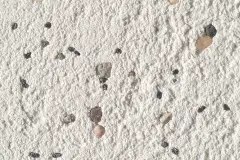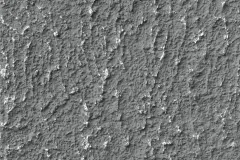Render
-
Unleash design possibilities with rendered facades
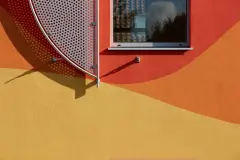
Render, also known as plaster or stucco, offers almost infinite design possibilities in terms of texture, colour, sheen, applied additives and bespoke techniques. Few facade surfacce materials offer such exciting opportunities to play, experiment and create something truly unique.
Sto is the market leader in manufacturing cement-free sustainable renders, plasters and facade finishes. Our renders and plasters come in a variety of textures and finishes they can be combined with anti-crack levelling coats and to our external thermal insulation systems.
These materials can be customised with unique combinations, layering, additives, effects and handcrafted application techniques. Start with a texture, either a single product or combination of products, tools or techniques, choose either a colour within the material or as a coating to provide either a sheen or glaze appearance, and finally add a variety of effect particles into the moist finish. -
Explore the different types of render
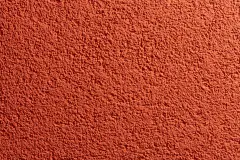
Traditional
Mineral render (sand-cement-lime) renders can provide a facade's surface with a heterogeneous character but are recommended to be overcoated, due in part to the risk of efflorescence and also in order achieve consistency and more intense, bright colours.
Innovative
Sto is best known for being a pioneer in the development of synthetic cement-free renders, which are pre-mixed, through coloured, flexible and offering a consistent colour tone as well as ensuring that minor knocks and chips are not obvious.
The materials are available with acrylic, silicone or silicate binders - each with their own benefits and properties. Different grain sizes from 1-6mm determine the final texture and creative potential of each material. Through-tinting helps to make application and long term maintenance simple. Additional application of metallic sheen and added particles increase the design possibilities.
Find out more about the StoColor range for render facade colour options
-
Brick effect render
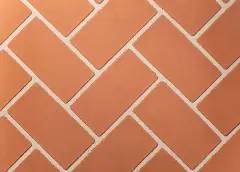
Achieve the timeless aesthetic of brick in a wide variety of customisable colours, sizes and textures. Using render to achieve this look is possible with the right tools and a stencilling technique, allowing you to choose the colour and texture of the 'brick' and 'mortar' - or even create unique combinations on the same project. This can be an excellent option when real bricks, brick veneer or render tiles are not appropriate.
Find out more about brick effect render -
Brushed render
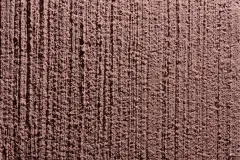
This delicate texture is achieved through the hand-crafted scraping of a brush or broom over the final coat of render whilst still wet. The bristles of the tool disperse the fine aggregate in the paste to create this distinctive pattern, particularly popular in Europe in the Art Nouveau period. This pattern can be horizontal, vertical, diagonal or indeed freeform or a combination - the freedom is with the designer and applicator to determine the artisanal finish.
Find out more about brushed render -
Combed render
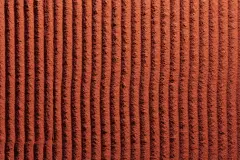
Depending on the specific tool used, a fine-grained render can be combed into V-ribbed, reeded, or fluted patterns. The linear pattern of this texture plays with light and shadow to create a distinctive, hand-crafted finish that can be used in sections to emphasise certain features such as windows, or across a whole facade. Usually seen as a vertical, the pattern can be executed in any and multiple directions as determined by the designer and craftsperson.
Find out more about combed render -
Concrete effect render
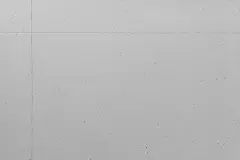
Smooth, textured and even formed concrete surface impressions are just some of the customisable finish surfaces made possible with Sto render products. The distinctive aesthetic of concrete, such as Modernism and Brutalist architecture, can be achieved without the use of cement and concrete as a surface finish for contemporary external wall systems and interiors.
Find out more about concrete effect render -
Embossed & debossed render

Various techniques can be used to create subtle embossing and debossing effects with Sto's renders. Whether impressing a pattern on the surface with fabric or mesh, or adding a thin coat layer with a stencil to create a slightly raised pattern, this technique has versatile applications. Stamps, moulds and other objects can be used to create these variations in surface impressions, playing with depths to create a unique facade. Combine colours and textures, or contrast textures in the same colour - this unique property of rendered facades can bring an otherwise plain surface to life. Often used for creating patterns or integrated signage, this method adds a slightly sculptural quality to a facade.
Find out more about embossed & debossed render -
Freeform render

True artistic freedom and expression, freeform render techniques rely on the craftsmanship of the person applying the material. Unique each time, the craftsperson's skill and artistry really comes into its own, using the material and tools to create a one-of-a-kind aesthetic. Often roughly applied with a trowel, this technique allows experimentation with shapes, patterns, irregular thickness, colours, textures - the potential for inspiration and imagination is limitless.
Find out more about freeform render -
Metallic sheen render
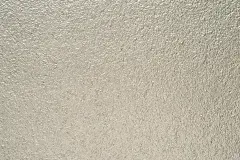
A number of Sto renders can be applied in all sorts of techniques to create the desired surface profile, and then further enhanced with a metallic coating. The ability to mimic a metallic material can be useful for designers whilst incorporating the multiple benefits of render. Lightweight, sustainable, easy to apply and maintain, and lower cost factors make metallic sheen render a great option where utilising real metal panels would be unsuitable.
Find out more about metallic sheen render -
Plucked & patted render
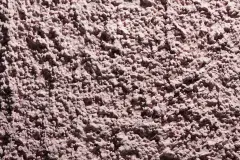
This application technique creates a finish that resembles a texture akin to volcanic rock. The final layer of render is applied in a thin coat, its viscosity allowing it to be pressed, patted and 'plucked' away with a tool which creates the characteristic burrs synonymous with this aesthetic. Through-colour materials are particularly appropriate for this technique as over time, these burrs may chip away but will not be noticable.
Find out more about plucked & patted render -
Rilled render
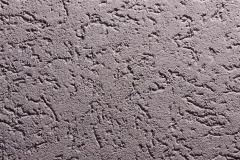
One of the most common ways render is applied, rilled render (also known as 'scraped' or 'worm' render) finishes vary depending on the application method and the aggregate within the material. Creating an effect similar to travertine marble, the grooves on the surface are a result of the grains in the material being scratched or scraped across the surface - so the character of this indentation's depth, size, and direction depends on the craftsperson's hand movements.
Find out more about rilled render -
Rollered render

Similar to other techniques in its treatment of the final coat of render, this common technique involves the surface to be texturised with the aid of a roller. The specific properties of the tool and grain size of aggregate in the render will determine the final product. The roller may be sponge, felt or wool for example, each will interact with the render in slightly different ways to give a different final character.
Find out more about rollered render -
Sgraffito (scratched) render

Fascinating technique with one-of-a-kind results - a thin coat of render is applied to the surface, and then etched away while still wet in the desired pattern or artwork, revealing the surface underneath. Templates and stencils can be used for consistency, or simply done freehand.
Find out more about sgraffito (scratched) render -
Sponge floated render
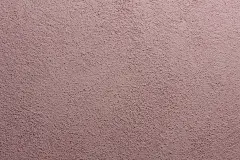
Similar to plucked and patted rendering techniques, sponge floated render creates a distinctive surface texture thanks to the treatement of the final layer with a tool - in this case a sponge. The peaks and burrs seen with plucked render techniques are softened because of the soft and absorbant nature of the sponge, giving a much more subtle, almost powdery result.
Find out more about sponge floated render -
Sprayed render

A fast and efficient way to apply a render to a facade is with the assistance of machines that spray the material onto the wall. If done effectively, this technique can create an almost organic surface texture similar to tree bark in its non-uniform yet harmonious structure. It is not dissimilar to the way spray paint or airbrushing is applied to a surface, with grain size in the render material determining how smooth or rough the final result will be.
Find out more about sprayed render -
Stencilled render

Graphic designs can be brought to life with rendered surfaces, creating a unique building identity. Repeat, clearly defined patterns and motifs can be used across an entire facade, or even be applied to sections or to create a particular artistic feature. This technique is useful also for integrating signage directly onto the facade surface, or creating a dramatic effect behind mounted signage and other facade details.
Find out more about stencilled render -
Stippled render
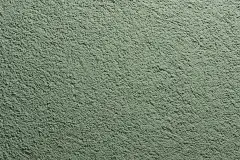
Perhaps the most standard of rendered facade finish techniques, stippled renders have been in existence since the 14th Century and are a classic choice. The use of various grain sizes and tools makes it possible to model both directional and non-directional textures in the surface, with the finer aggregates creating a uniform, almost smooth surface when viewed at a distance. The delicate texture becomes visible up close, giving the facade a tactile quality.
Find out more about stippled render -
Stone effect render
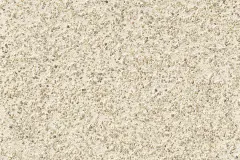
Various stone finishes are possible with render - from granite-like structures, terrazzo-like grains, to stone blocks. Depending on the desired effect, the material can be applied and enhanced to mimic the characteristics of natural stone. Application and finishing techniques such as layering, sanding, polishing and coating can play with levels of sheen, colour variations and textures.
Find out more about stone effect render -
Wet dash render
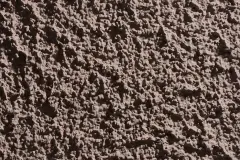
Also known as roughcast rendering, this technique is sometimes confused with pebbledashing or dry dashing. Wet dash is different in that the small pebbles are mixed into the render, rather than applied to the surface of the wet material on the wall. The result is the texture of the pebbles is retained, whilst they are themselves not visible, allowing the surface to be painted and repainted easily for years to come.
Find out more about wet dash render -
Wood effect render
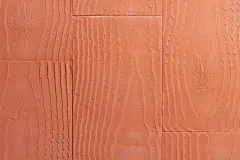
Fine textured render can be finished to mimic the distinctive pattern and texture of wooden panels, ideal for surfaces where natural wood is not suitable, for example because of environmental conditions and moisture. With the use of a specialist tool, this technique can create the impression of wood grain in multiple colours, whilst benefiting from the many wonderful attributes of a render facade.
Find out more about wood effect render -
Render enhancements & additives
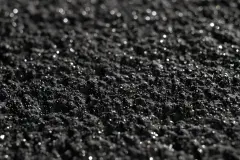
Functional and aesthetic enhancements are possible with a wide range of coatings and granulates. Whether applied to the full surface, partial areas or stencilled, these enhancements give an extra layer of versatility to rendered facades. Sto's innovative products can help rendered surfaces stay looking better for longer by protecting them from fluctuations in heat, moisture ingress, dirt, fungus and algae. Other additives can add an aesthetic effect such as glitter, terrazzo and patina.
Find out more about render enhancements & additives



